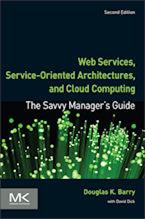When to Use an Application Server
You should consider an application server when you have a need for:
- Integration with existing systems and databases
- Website support
Secondary reasons to use application servers derive from the primary reasons. A few secondary reasons are:
- E-Commerce
- Web-integrated collaboration
- Component re-use
One way to look at application servers is that they are a formalization of a solution to a problem that has been around for a long time. That problem can characterized as a need to create an integrated presentation and processing environment for existing systems and databases. The presentation has pretty much been decided with browsers now being the dominant interface. This is why you usually see a Web server paired with or included in an application server. The integrated processing has been moving towards components for some time. Application servers provide containers for such components along with application program interfaces (APIs) to support the components. These APIs are to the existing systems and databases.
Context for When to Use an Application Server
Related Articles for When to Use an Application Server
Author
Douglas K Barry
Principal
You may use this material for your work or classes. Reprint Policy. Be sure to check the menu at the left for other articles available on this site.
The Savvy Manager's Guide
Douglas K Barry is also the author of a book that explains Web Services, service-oriented architecture, and Cloud Computing in an easy-to-understand, non-technical manner.
Web Services, Service-Oriented Architectures, and Cloud Computing: The Savvy Manager's Guide (Second Edition)
by Douglas K Barry with David Dick
This is a guide for the savvy manager who wants to capitalize on the wave of change that is occurring with Web Services, service-oriented architecture, and—more recently—Cloud Computing. The changes wrought by these technologies will require both a basic grasp of the technologies and an effective way to deal with how these changes will affect the people who build and use the systems in our organizations. This book covers both issues. Managers at all levels of all organizations must be aware of both the changes that we are now seeing and ways to deal with issues created by those changes.

